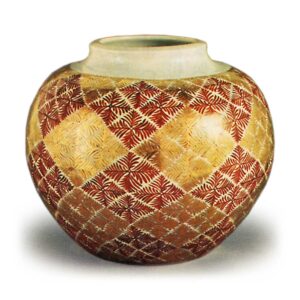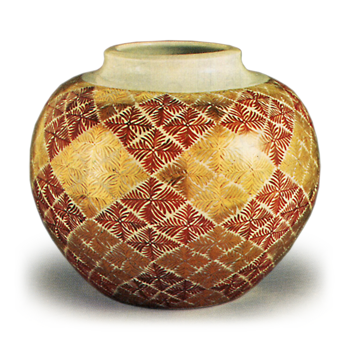
One of the most outstanding ceramic artists to emerge after the Meiji era, Kenkichi Tomimoto was born in June 1886 in Asu-mura, Ikoma-gun, Nara Prefecture, and graduated from the Department of Design, Tokyo Fine Arts School (now Tokyo National University of Fine Arts and Music) in 1909 (42nd year of Meiji). During this period, he worked as an architectural engineer, and also worked as an architectural engineer. In 1911, he returned to Japan and became acquainted with the British printmaker Bernard Leach, who was living in Tokyo. In 1915, he built his own kiln and began to make full-scale ceramics with creative designs.
He traveled to various parts of Japan and Korea for further study, and in 1926, he moved to Soshigaya (Setagaya Ward), Tokyo, and entered the national border area. He opened up a new frontier in underglaze blue and red porcelain, which was highly acclaimed, and he became a member of the Art Institute of Japan. After the war, he moved to Kyoto to teach at the National University of Fine Arts and Music (now Kyoto City University of Arts), and at the same time, he broke with the Folk Crafts School and the National Painting Association, with which he had long been dissatisfied, and devoted himself exclusively to production, leaving behind many memorable achievements. He died in June 1963 at the age of 77. What differentiates him from other ceramic artists is that he maintained an extremely vigorous spirit of research based on his deep academic knowledge. While accumulating a vast knowledge of craft and design, he never relied on this knowledge, but always sought to create and apply new designs based on realism. He is the author of many books, including Kilnside Miscellany.



